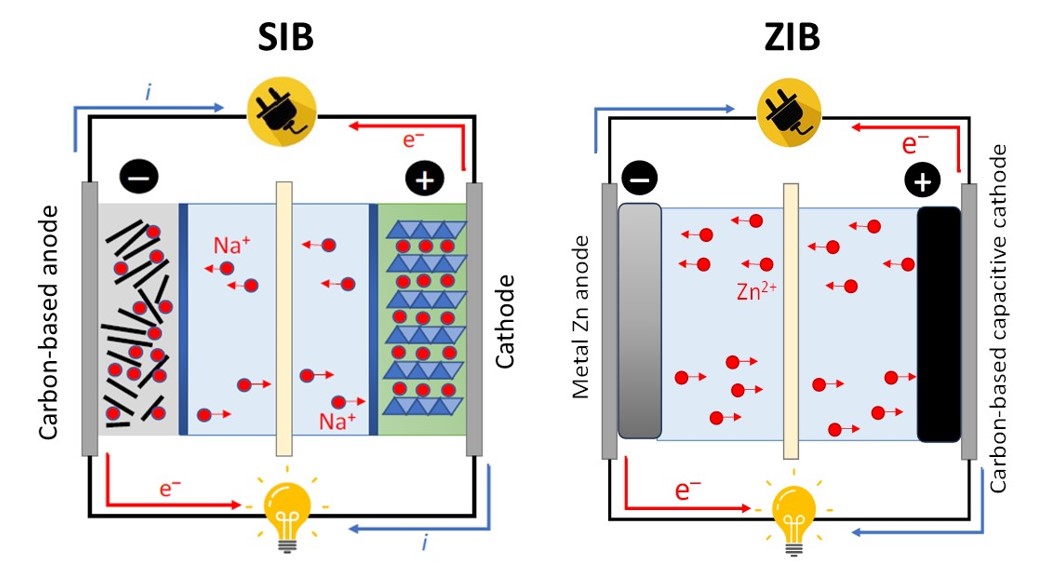-
Proyectos
Developing sustainable carbon-based electrodes for their integration into solid- or quasi-solid-state sodium-ion batteries and zinc-ion batteries – SUSTENTATION

- Start date: 01/09/2023
- End date: 31/08/2026
- Coordinador: Joan Josep Manyá
- Tipo: Ministry of Science and Innovation, Spain
- Funding: 200.000 €
One of the research priorities in the strategic action on climate, energy and mobility is to develop suitable electrochemical energy storage (EES) technologies to achieve the required energy storage capacity for grid-connected renewable power and electric mobility. Since current battery value chain has significant risks, especially concerning the supply of critical raw materials, more sustainable and affordable EES technologies, based on more abundant raw materials, have to be urgently deployed. Sodium-ion batteries (SIBs) and aqueous zinc-ion batteries (ZIBs) are very attractive candidates for this purpose. In both cases, biomass-derived hard carbons (BHCs), and their composites with active-redox materials, can be used as electrodes.
SUSTENTATION aims at producing tailor-made BHCs from waste biomass via thermochemical processing with metal and heteroatom doping strategies. For SIB purposes, affordable and scalable synthesis pathways based on a combination of pyrolysis and/or hydrothermal carbonization (with heteroatom doping) pretreatments, mild chemical and physical activation, and high-temperature annealing will be explored. For ZIBs, Fe- and/or Mn-based oxides embedded on waste lignin-derived carbon nanofibers (CNFs) will be synthesized to be used as high-performance cathodes, since the resulting hybrid material could be able to avoid the penetration of the aqueous electrolyte into the active sites and the subsequent dissolution.
The most promising electrode materials, depending on their morphological, structural and surface features, will be electrochemically tested at lab-scale as anodes in SIBs and as cathodes in ZIBs. In parallel to the development of BHC-based electrodes, ceramic solid-state electrolytes (for SIBs) and gel-type polymer electrolytes (GPEs, for ZIBs) will be designed and synthesized with the aim at improving their compatibility with the sustainable carbon electrodes and, therefore, synergistically boosting the performance of full SIBs and ZIBs. For SIBs, NASICON-type solid-sate electrolytes will be tailored to maximize the ionic conductivity, whereas gel-type polymeric electrolytes consisting of high-concentrated liquid electrolytes trapped within a polymer matrix will be explored for ZIBs.
Single-layer pouch-type solid-state full SIBs will be assembled using the best performing BHC-based anodes, the optimized NASICON-type electrolyte and state-of-the-art inorganic cathodes. For ZIBs, the best-performing components will be integrated into sandwich-type flexible devices, which will consist of the optimized GPEs, the best-performing lignin-based hybrid cathodes and a zinc metal anode. The full-cell integration approach is in fact the most novel aspect of the project, since the results obtained in terms of electrochemical performance using more realistic full-cell devices will be useful for scaling up purposes.
(PID2022-137218OB-I00)


